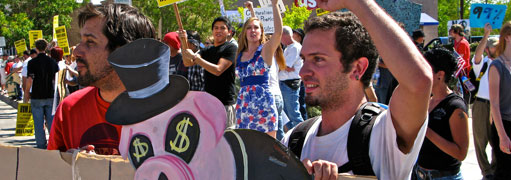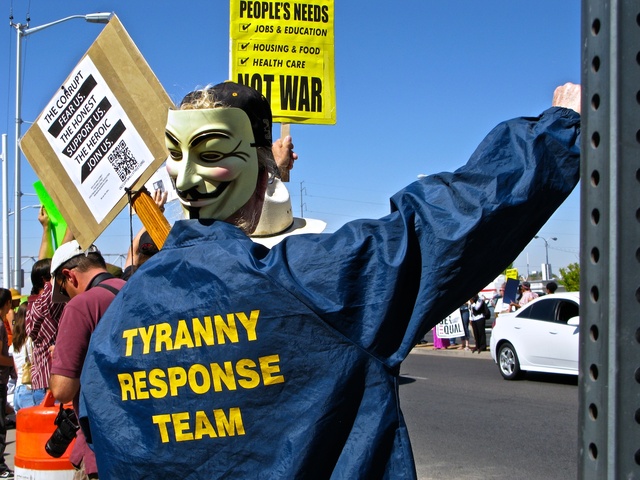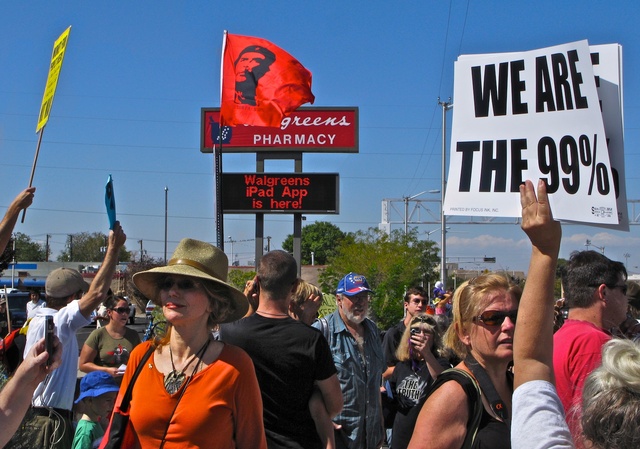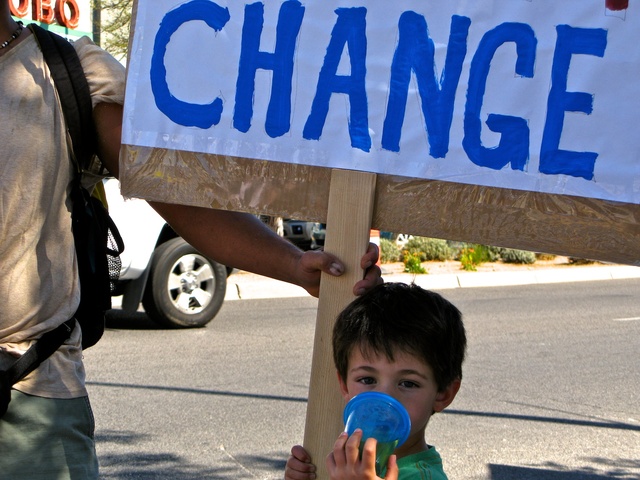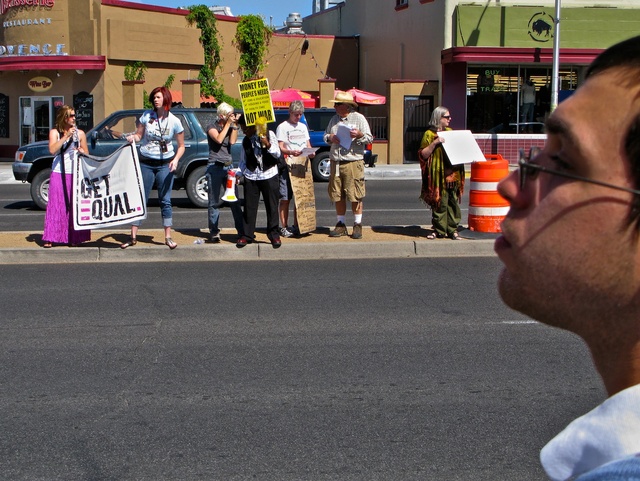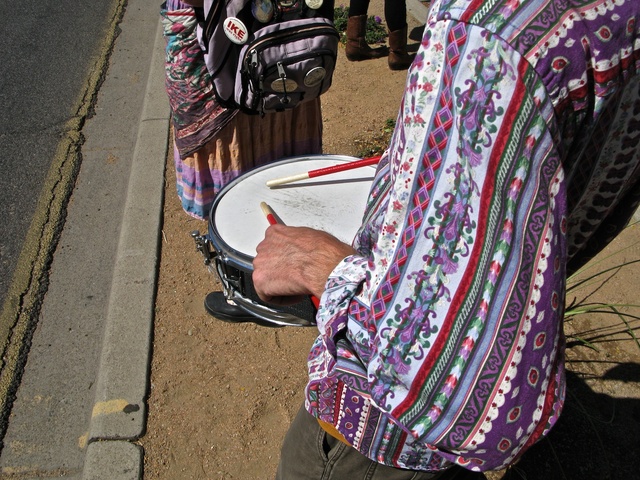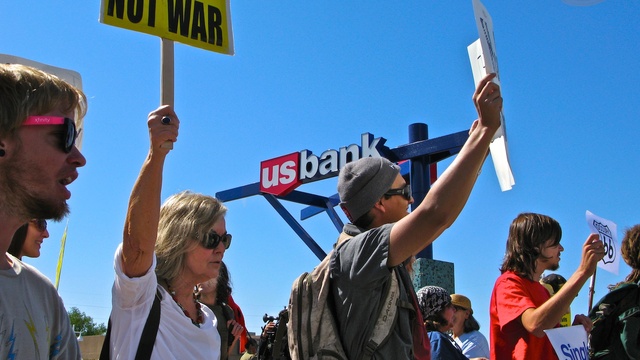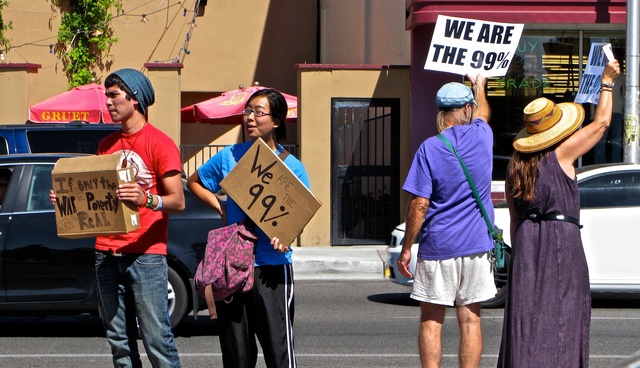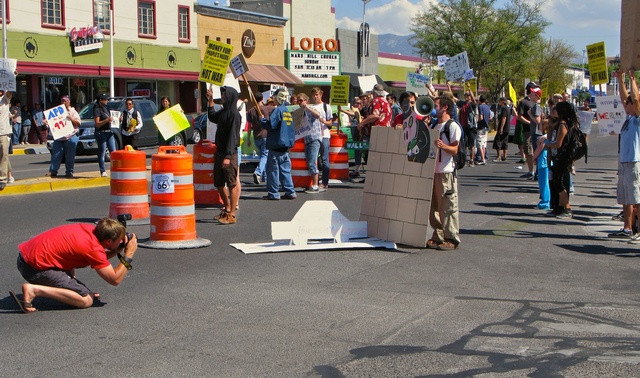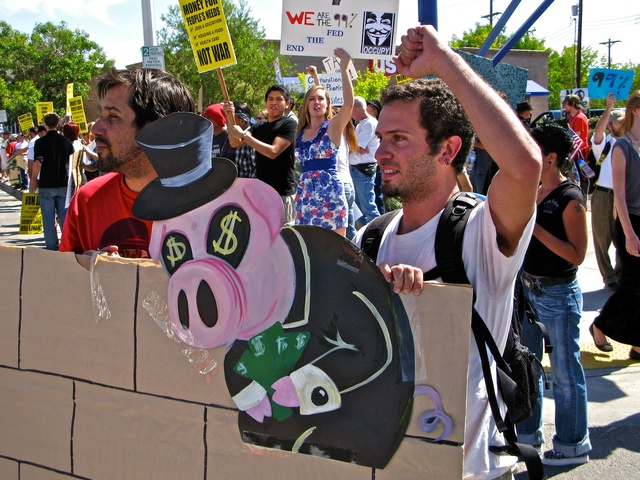Hundreds of people marched up Central on Saturday, Oct. 1, stopping traffic as they went. They were participating in the Occupy Albuquerque campaign, a loosely organized demonstration inspired by the Occupy Wall Street protest that’s been ongoing in Manhattan since Sept. 17. After the march, a few dozen people set up at the University of New Mexico. The Albuquerque Police Department told activists on campus that they would not be arrested and could stay on university property, as long as they did not block an intersection. Some stayed in tents on UNM campus at the corner of Central and University. As of press time, it was unclear whether UNM would allow them to remain.The march was accompanied by heavy police presence, including a circling helicopter. Some demonstrators worried the riot squad would be called in to break it up. The protest began at the U.S. Bank across from the mini APD substation in Nob Hill, but after police cars blocked the road, marchers decided to move so they would be more visible. Officers followed the demonstrators as they walked east from Dartmouth and blocked off every intersection they came to.“I think they’re trying to keep our audience away from us, and it’s not working, because we’re going to keep on pushing through,” said Brittany Arneson. CNM student Henry Edwards wore a gas mask—in case of tear gas—and a red medic’s armband. He said he only had basic first-aid training but was prepared to help out in any way he could. “You look at the civil rights movement, you look at Vietnam protests,” he said, “every protest this big needs medics.”Police Chief Ray Schultz, who followed much of the march in an unmarked vehicle, said officers came to protect the demonstrators. “We’re trying to keep these people from getting themselves killed,” he said. “They’re marching in the street.”APD had no plans to try to contain the activists, Schultz said. “This is America. They can go wherever they want. We just don’t want them to get hurt.”National Lawyers Guild member Larry Kronen said he was in contact with APD throughout the march and advised protesters about how to behave if they wished to avoid a confrontation. He said city ordinances stipulate that people can spill out in the street if there are too many to fit on the sidewalk, as long as they make a reasonable effort to cooperate with police. “So far the cops have been pretty good,” he said. “We negotiated, and they conceded part of the street, as they’re supposed to, according to the city ordinance.” Caro Acuña and Amalia Montoya, two of the events’ organizers, said Occupy Albuquerque has no leaders, and decisions are made through discussion and consensus. The group is not affiliated with Occupy Wall Street but was inspired by it and the other protests it sparked around the country, such as Occupy Boston and Occupy Chicago, Acuña said.“Individual people in individual cities just took responsibility, citizen responsibility, and started posting events online,” she said.Montoya said the goal is to provide better living conditions for average Americans, what Occupy folks call “the 99 percent.” That’s everyone who’s not in the top 1 percent of wage-earners in the United States. That single percent of Americans controls about 43 percent of the nation’s total financial wealth, according to data gathered by an economist at New York University.“All of us can have the same education, have food, clothing and shelter,” Montoya said. “That’s all we’re asking for—basic human rights.”
Go to occupyalbuquerque.org for updates.See a slideshow documenting the protest at alibi.com.
